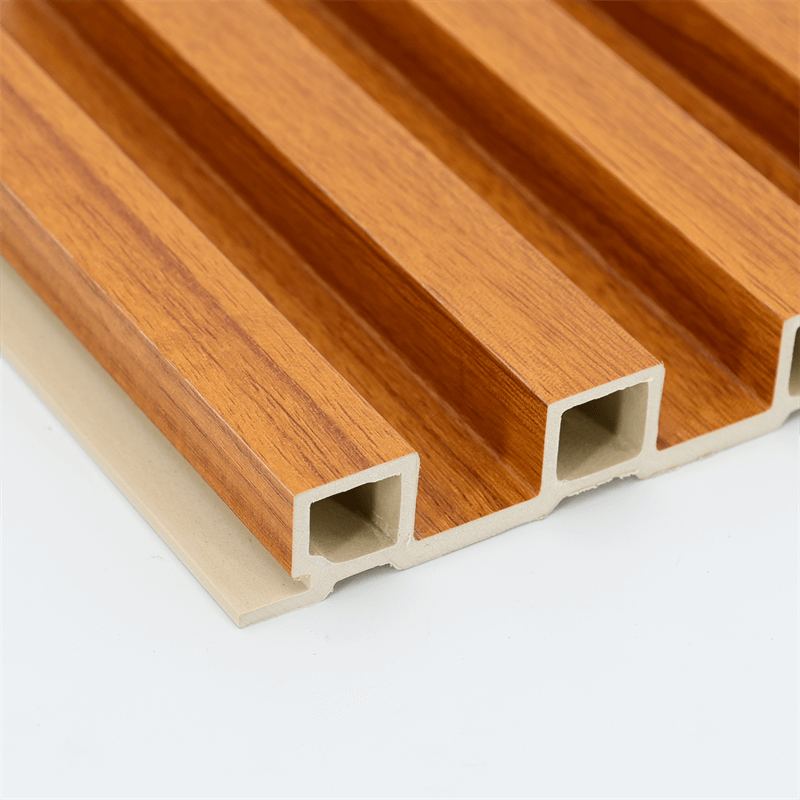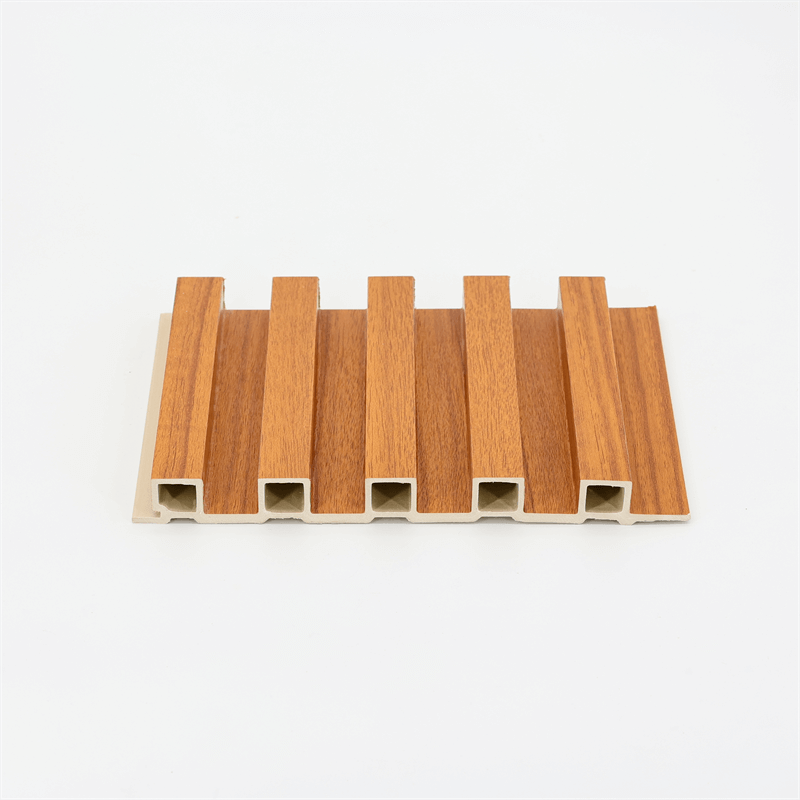Interior design plays a vital role in creating functional, aesthetically pleasing, and inviting spaces.
Wood-plastic composite (WPC) wall panels have emerged as a transformative design element, offering a myriad of possibilities for interior spaces.
This essay explores the design potential of WPC wall panels, focusing on four key aspects: versatility in style and appearance, spatial transformation, acoustic enhancement, and ease of installation.
I. Versatility in Style and Appearance:
WPC wall panels offer designers and homeowners a wide range of style and appearance options, allowing for versatile design possibilities.
They are available in various colors, finishes, textures, and patterns, enabling customization to suit different interior aesthetics.
Whether the design concept calls for a contemporary, rustic, or minimalist look, WPC panels can be adapted to meet the desired style.
The availability of different finishes, such as wood grain, stone, or metallic effects, allows designers to mimic the appearance of traditional materials while benefiting from the advantages of WPC.
Moreover, WPC wall panels can be easily cut, shaped, and installed in different configurations, making them suitable for creating unique and eye-catching feature walls or focal points within a space.
The versatility in style and appearance offered by WPC panels opens up endless design possibilities and allows for personalized and distinctive interior environments.
II. Spatial Transformation:
WPC wall panels have the power to transform the perception and experience of interior spaces.
Whether it is a residential living room, a commercial office, or a hospitality establishment, WPC panels can enhance the overall atmosphere and ambiance.
By strategically incorporating WPC panels, designers can visually enlarge a space or create the illusion of height.
Light-colored panels with smooth finishes can reflect natural and artificial light, making a room appear more spacious and open.
Furthermore, WPC panels can be used to divide and define different areas within a large space.
They can create partitions, screens, or room dividers that add architectural interest while maintaining an open and airy feel.
These panels allow for the creation of functional zones without compromising the flow and unity of the overall design.
III. Acoustic Enhancement:
In addition to their visual impact, WPC wall panels can also contribute to improving the acoustic performance of interior spaces.
Sound absorption and noise reduction are crucial considerations, particularly in commercial and public settings where noise control is essential for occupant comfort.
WPC panels with acoustic properties can help absorb and dampen sound, reducing reverberation and echoes within a space.
This enhances speech clarity, minimizes distractions, and creates a more pleasant and peaceful environment.
The use of WPC panels with acoustic capabilities allows for the design of spaces that promote productivity, concentration, and overall well-being.
IV. Ease of Installation:
Another advantage of WPC wall panels is their ease of installation, making them a popular choice for both professionals and DIY enthusiasts.
The panels often feature user-friendly interlocking systems or tongue-and-groove connections that simplify the installation process.
The lightweight nature of WPC panels reduces the physical strain during installation and makes them suitable for a variety of interior surfaces.
They can be mounted directly onto drywall, concrete, or other substrates, saving time and labor costs.
Furthermore, the ease of installation enables efficient renovation and remodeling projects.
WPC panels can be used to refresh and update the look of existing interiors, allowing for quick and hassle-free transformations.
WPC wall panels have revolutionized interior design, offering a wealth of design possibilities for transforming interior spaces.
The versatility in style and appearance, coupled with the ability to visually enlarge spaces, enhance acoustics, and provide ease of installation, makes WPC panels an attractive choice for designers and homeowners.
The design potential of WPC wall panels allows for personalized and distinctive interior environments that cater to various aesthetics and functional requirements.
Whether it is creating feature walls, dividing spaces, or improving acoustic performance, WPC panels offer a transformative element that can elevate the overall design of any interior space.
By embracing the design possibilities offered by WPC wall panels, architects, designers, and homeowners have the opportunity to create inspiring, inviting, and functional spaces that reflect their vision and enhance the well-being of occupants.
The versatility and practicality of WPC panels make them an invaluable tool for shaping interior environments that are both aesthetically pleasing and functional.
In addition to their design versatility, WPC wall panels also bring a range of practical benefits to interior spaces.
Their durable and low-maintenance nature ensures long-term performance and reduces the need for frequent upkeep.
WPC panels are resistant to moisture, rot, and pests, making them ideal for areas that are prone to high humidity or dampness, such as bathrooms or kitchens.
Unlike traditional materials like wood or gypsum board, WPC panels do not swell or warp when exposed to moisture, ensuring their longevity and preserving their visual appeal.

Furthermore, WPC wall panels are easy to clean and maintain. They can be wiped down with a damp cloth or mild cleaning solution, eliminating the need for specialized cleaning products or extensive maintenance routines. This convenience not only saves time and effort but also contributes to a hygienic and healthy environment.
The durability and resistance to wear and tear make WPC panels suitable for high-traffic areas such as lobbies, corridors, or commercial spaces.
Their ability to withstand impact and abrasion ensures that they maintain their original appearance and structural integrity even in demanding environments.
Another advantage of WPC wall panels is their compatibility with various design elements and materials.
They can be seamlessly integrated with other interior finishes such as flooring, furniture, or decorative elements.
The wide range of colors, textures, and finishes available allows for harmonious coordination and cohesive design concepts.
WPC panels also offer flexibility in terms of customization. They can be easily painted or stained to achieve specific color preferences or to match existing interior palettes.
This adaptability allows for a high degree of creative freedom and ensures that the panels can be tailored to meet specific design visions.
Additionally, the eco-friendly nature of WPC panels adds to their appeal as a sustainable design solution.
Made from recycled materials and utilizing renewable resources, WPC wall panels contribute to reducing the environmental impact of interior design.
By choosing WPC panels, designers and homeowners can align their projects with green building practices and sustainability goals.
In conclusion, WPC wall panels offer a transformative and practical solution for interior spaces.
Their versatility in style and appearance, spatial transformation capabilities, acoustic enhancement, ease of installation, and low-maintenance nature make them an ideal choice for creating visually striking, functional, and sustainable interiors.
By incorporating WPC panels into design projects, architects and designers can push the boundaries of creativity, while homeowners can enjoy the benefits of durable, aesthetically pleasing, and easy-to-maintain spaces. With the ever-growing demand for sustainable and innovative interior solutions, WPC wall panels are poised to continue their rise as a preferred choice for transforming interior spaces in the years to come.


